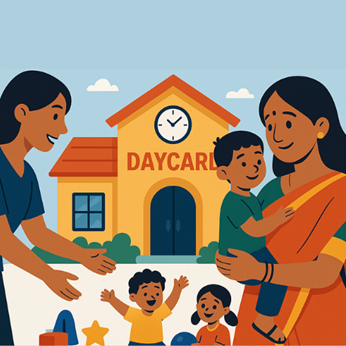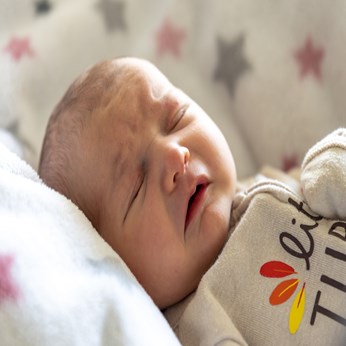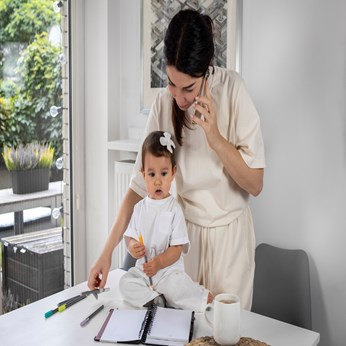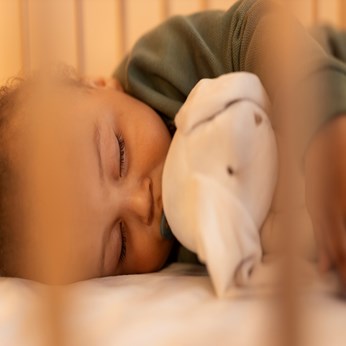All about Brain Development in a child
I was amazed to read an article about the development of brain in babies by Nancy Slessenger, a brain expert; a baby’s brain develops from the time he/she is in the mother’s womb, though it is invisible to the naked eye. This article motivated me to share the information with one and all.
How a baby’s brain develops in the womb:
It is best understood that from the time of conception, the fetus develops both physically and mentally, with a baby’s brain making quarter a million new neurons and links every minute; making brain cells is hard and this accounts for the mother getting tired. Again it is significant to note that a baby’s memory is developed even before birth and he/she recognizes the mother. All this calls for expecting mothers to make healthy diet and lifestyle choices even when the baby in the womb.
The brain is incredibly elastic at this stage and throughout life; this is the reason why brains of babies whose mothers drink or smoke is different from others as the brain cells simply do not know where to go while your brain was forming. The same applies to those babies that have little ‘ectopic areas’ of their brain; they are sometimes linked with dyslexia or that their brains are wired up differently due to the factors they experienced while they were in their mother’s womb.
Development of brain since birth:
1 out of 4 parts of the adult’s brain is developed at birth. It is found that the brains of babies whose mothers did not/consumed very less protein were less developed than mothers who consumed a lot of protein. It was also found that breastfeeding mothers that consumed a lot of protein did influence their babies’ brain development, but the extent was much less than when mothers consumed a high protein balanced diet during pregnancy. This emphasizes the important of protein for fetal brain growth and development.

Rapid brain development is seen in the first year of life with phenomenal changes in the child’s behavior, understanding and the way he/she interacts with the world. His/her brain looking like that of an adult, with twice the connections of an adult being forming by 3 years of age. During the first 10 years of life, a child develops billions and billions of connections at random, with connections no longer required withering out. The ages 3-10 bring about rapid intellectual, emotional and social development, with a child’s brain developing, changing and growing throughout life.
The differences in a boy and a girl’s brain:
Truly there are physical differences between a boy and a girl’s brain; boy’s brain develops from back towards the front, while girl’s brain develops from front to back. So boys develop motor skills sooner than thinking, while girls develop thinking and language skills sooner.
Reasons why a child’s brain is more active than an adult:
Children are continuously going through new experiences and gathering new information as they love to do new things. By the age of 11, the pruning of the child’s brain occurs and unused parts of the brain are pruned off.
As a final note it is however to be understood that some parts of the brain are always developing and the brain never stops developing and growing.
Image Courtesy: Google
Take the next step toward your goals
Share your requirement and find the best care providers in your area
-
Looking for a caretaker’s job? Build your profile and get in touch with families in your vicinity.
-
Discover nannies, babysitters, cooks, housekeepers, pet sitters, and elder care under one roof.
-
Get all the support you need to run a successful care center.
-
Search for appropriate centers near you depending on your needs.
Care Corner Insights: Blog Library

Daycare Admissions in Cary, NC for New NRI Families: Documents, Health Records, and Start Dates
Moving to a new country is exciting but also comes with many responsibilities—especially when it comes to finding the right daycare for your little one. For new NRI (Non-Resident Indian) families settling in Cary, NC, understanding the daycare

Overnight Babysitters in Bellevue, WA for Business-Travelling NRI Parents: Safety & Policies
For many NRI parents living in Bellevue, WA, frequent business trips are a reality. While traveling, one of the biggest concerns is ensuring your children are safe, cared for, and emotionally supported during overnight stays. Overnight babysitters ca

Indian Home-Style Cooks in Queens, NY: Tiffin-Style Weekly Meal Prep from Your Kitchen
Queens, NY, is home to one of the most diverse food cultures in the country, and Indian cuisine holds a special place among families looking for authentic, comforting meals. While restaurant takeout is convenient, nothing compares to the taste and nu

Baby Sleep Problems: What is Sleep Regression and How to Handle It
If you’re a parent, you know that baby sleep is one of the greatest mysteries of life. One day your little one is snoozing like an angel, and the next day they’re suddenly waking up every hour, fussing, or refusing to nap. Before you panic, there’s a

What is Validation Therapy? A New Approach to Dementia Care
Caring for loved ones with dementia is one of the most emotionally challenging journeys a family can face. Traditional methods often focus on correcting memory lapses or redirecting confused thoughts—but that can sometimes lead to frustration, stress

What is a Part-Time Nanny and Do You Need One
Parenting is a beautiful journey, but let’s be honest—it can also be exhausting! Between work deadlines, household chores, and family responsibilities, sometimes there just aren’t enough hours in a day. That’s where part-time nannies step in, offerin

Part-Time Housekeeper Hiring in Alpharetta, GA: Weekly Schedules, Pricing, and Must-Do Tasks
Keeping a home spotless while balancing work, family, and personal commitments can be overwhelming. For families and professionals in Alpharetta, GA, hiring a part-time housekeeper is one of the most practical solutions. Whether you need help once a

Affordable Daycares in Irving, TX with Indian Menu Options: Parent Reviews & Enrollment Tips
Finding the right daycare for your little one is never an easy decision—especially if you’re looking for one that fits your budget and offers familiar food options like an Indian-inspired menu. For parents in Irving, TX, the good news is that several

Can Babies Sleep on Their Side? Tips for Safe Baby Sleep
When it comes to newborns, every parent worries about the smallest details—how they sleep, what they wear, even which way they turn their tiny heads. One common question that pops up is: “Can babies sleep on their side?” The short answer? Not recom

8 Benefits of Hiring a House Cleaner for Your Home
Let’s be honest — keeping a home sparkling clean while juggling work, family, and daily life can feel like a full-time job in itself. That’s where professional house cleaners step in, turning the chaos into calm. If you’ve been debating whether to br